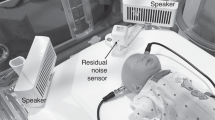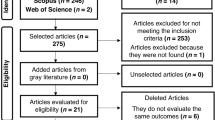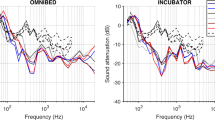Abstract
Objective:
To measure the effectiveness of modifications to reduce sound and vibration during interhospital ground transport of a simulated infant with very low birth weight (VLBW) and a gestational age of 30 weeks, a period of high susceptibility to germinal matrix and intraventricular hemorrhage.
Study Design:
Researchers measured vibration and sound levels during infant transport, and compared levels after modifications to the transport incubator mattresses, addition of vibration isolators under incubator wheels, addition of mass to the incubator mattress and addition of incubator acoustic cover.
Result:
Modifications did not decrease sound levels inside the transport incubator during transport. The combination of a gel mattress over an air chambered mattress was effective in decreasing vibration levels for the 1368 g simulated infant.
Conclusion:
Transport mattress effectiveness in decreasing vibration is influenced by infant weight. Modifications that decrease vibration for infants weighing 2000 g are not effective for infants with VLBW. Sound levels are not affected by incubator covers, suggesting that sound is transmitted into the incubator as a low-frequency vibration through the incubator’s contact with the ambulance. Medical transportation can apply industrial methods of vibration and sound control to protect infants with VLBW from excessive physical strain of transport during vulnerable periods of development.
This is a preview of subscription content, access via your institution
Access options
Subscribe to this journal
Receive 12 print issues and online access
$259.00 per year
only $21.58 per issue
Buy this article
- Purchase on Springer Link
- Instant access to full article PDF
Prices may be subject to local taxes which are calculated during checkout



Similar content being viewed by others
References
Births: Final Data for 2010. National Vital Statistics Reports (2012). Retrieved from http://www.cdc.gov/nchs/data/nvsr61/nvsr61_01.pdf#table25; Accessed 1 November 2012.
Mohamed M, Aly H . Transport of premature infants is associated with increased risk for, intraventricular haemorrhage. Arch. Dis Child Fetal Neonatal Ed 2002; 95: F403–F407.
Towers CV, Bonebrake R, Padilla G, Rumney P . The effect of transport on the rate of severe intraventricular hemorrhage in very low birth weight infants. Obstet Gynecol 2000; 95 (2): 291–295.
Harding JE, Morton SM . Adverse effects of neonatal transport between level III centres. J Paediatr Child Health 1993; 29 (2): 146–149.
Blackburn S . Central nervous system vulnerabilities in preterm infants part 1. JPNN 2009; 23 (1): 12–14.
Levene MI, Fawer CL, Lamont RF . Risk factors in the development of intraventricular haemorrhage in the preterm. Arch Dis Child 1982; 57 (6): 410–417.
Meberg A, Hansen TW . Neonatal transports - risks and opportunities. OJPeds 2011; 1: 45–50.
Birnholz JC, Benacerraf BR . The development of human fetal hearing. Science 1983; 222: 516–518.
Field TM, Dempsey JR, Hatch J, Ting G, Clifton RK . Cardiac and behavioral responses to repeated tactile and auditory stimulation by preterm and term neonates. Dev Psychol 1979; 15 (4): 406–416.
Zahr L, Balian S . Responses of premature infants to routine nursing interventions and noise in the NICU. Nurs Res. 1995; 44 (3): 179–185.
Long JG, Lucey JF, Philip AG . Noise and hypoxemia in the intensive care nursery. Pediatrics 1980; 65: 143–146.
American Academy of Pediatrics, Committee on Environmental Health. Noise: a hazard for the fetus and newborn. Pediatrics 1997; 100 (4): 724–727.
Buckland L, Austin N, Jackson A, Inder T . Excessive exposure of sick neonates to sound during transport. Arch Dis Child Fetal Neonatal Ed 2003; 88: F513–F516.
Karlsson B, Lindkvist M, Lindkvist M, Karlsson M, Lundstrom R, Hakansson S, Van den Berg J . Sound and vibration: effects on infants’ heart rate and heart rate variability during neonatal transport. Acta Paediatr 2012; 101: 148–154.
Shenai J, Johnson G, Varney R . Mechanical vibration in neonatal transport. Pediatrics 1981; 68 (1): 55–57.
International Standards Organization Mechanical Vibration And Shock - Evaluation Of Human Exposure To Whole-body Vibration—Part 1: General Requirements (ISO - 2631-1:1997) 2001. International Standards Organization: Geneva, Switzerland, pp 27–29.
Sherwood B, Donze A, Giebe J . Mechanical vibration in ambulance transport. J Obstet Gynecol Neonatal Nurs 1994; 23 (6): 457–463.
Bouchut J, Van Lancker E, Chritin V, Gueugniaud P . Physical stressors during neonatal transport: helicopter compared with ground ambulance. Air Med J 2011; 30 (3): 134–139.
Gajendragadkar G, Boyd J, Potter D, Mellen B, Hahn G, Shenai J . Mechanical vibration in neonatal transport: A randomized study of different mattresses. J Perinatol 2000; 20 (5): 307–310.
Shah S, Rothberger A, Caprio M, Mally P, Hendricks-Munoz K . Quantification of impulse experienced by neonates during inter- and intra-hospital transport measured by biophysical accelerometery. J Perinat Med. 2008; 36 (1): 87–92.
Costain AK, Robichaud JM . Practical Methods for Vibration Control of Industrial Equipment. Bretech Engineering, Ltd. Web site: www.bretech.com. Accessed 10 October 2012.
Ashelin C Controlling facility noise with curtain walls. Occupational Health & Safety Web site. http://ohsonline.com/articles/2012/10/01/controlling-facility-noise-with-curtain-walls.aspx. Accessed 10 October 2012.
Browning J, Walding D, Klasen J, David Y . Vibration issues of neonatal incubators during In- hospital transport. J Clin Eng 2008; 74–77.
Theory of vibration/shock isolators. RPM Mechanical Inc. Web site: http://www.rpmmech.com/pdf/selecting-a-vibration-shock-isolator.pdf. Accessed 12 July 2012.
Marik PE, Fuller C, Levitov A, Moll E . Neonatal incubators: a toxic sound environment for the preterm infant? Pediatr Crit Care Med 2012; 13 (6): 685–689.
Sittig SE, Nesbitt JC, Krageschmidt DA, Sobczak SC, Johnson RV . Noise levels in a neonatal transport incubator in medically configured aircraft. Int J Pediatr Otorhinolaryngol 2011; 75 (1): 74–76.
Acknowledgements
We acknowledge Clint White, MD, Randy Henderson, MD, Kerry Stewart, MD, Joseph Whitehead, PhD, Jerry Styron, Jim Helm, PhD, AAA Ambulance Service, Forrest General Hospital and an excellent editorial staff for their contributions to this project. This study was supported by a grant from the U.S. Department of Education, #H325K080335. The contents, however, do not necessarily represent the policy of the US Department of Education, and endorsement by the Federal Government should not be assumed.
Author information
Authors and Affiliations
Corresponding author
Ethics declarations
Competing interests
The authors declare no conflict of interest.
Rights and permissions
About this article
Cite this article
Prehn, J., McEwen, I., Jeffries, L. et al. Decreasing sound and vibration during ground transport of infants with very low birth weight. J Perinatol 35, 110–114 (2015). https://doi.org/10.1038/jp.2014.172
Received:
Revised:
Accepted:
Published:
Issue Date:
DOI: https://doi.org/10.1038/jp.2014.172



